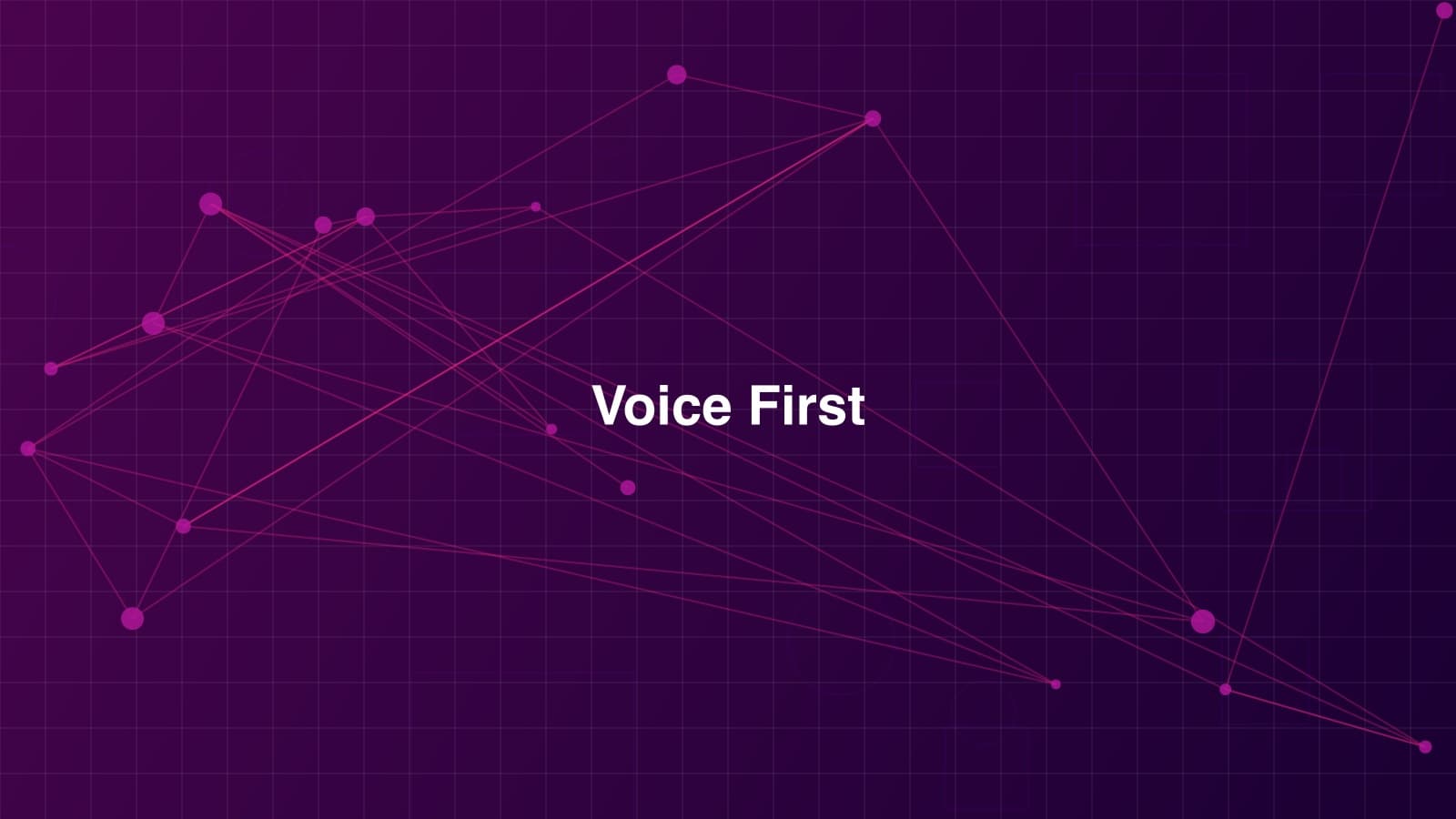Introduction
In my recent update on AI-assisted development, I mentioned that I’m “starting to code with my voice more.” This statement deserves its own deep dive. Voice-driven development isn’t just about dictating code—it’s a fundamental shift in how we interact with our development environment.
After six months of refining my voice-first workflow, I’ve discovered it’s not just faster for certain tasks—it fundamentally changes how I think about code architecture, naming conventions, and even problem-solving. Let me share everything I’ve learned.
Why Voice-First Development?
The benefits go far beyond preventing RSI or coding while walking:
- Natural Language Thinking: Speaking code forces clearer thinking about intent before implementation
- Speed for Boilerplate: Voice excels at generating repetitive structures 3-5x faster than typing
- Accessibility: Opens development to those with mobility challenges
- Cognitive Load: Frees mental bandwidth from mechanical typing to focus on logic
- Multi-Modal Development: Combines naturally with AI assistants for a conversational coding experience
My Voice Development Stack
Hardware Setup
Primary Microphone: Blue Yeti USB Microphone
- Position: 6-8 inches from mouth, slightly off-axis
- Settings: Cardioid pattern, gain at 50%
- Pop filter: Essential for plosive sounds
Backup: AirPods Pro (2nd gen)
- Excellent noise cancellation for open offices
- Seamless switching between devices
- Voice isolation mode for clarity
Acoustic Treatment:
- Simple foam panels behind monitor
- Thick curtains to reduce echo
- Carpet or rug under desk area
Software Tools
Speech Recognition Engine: Talon Voice
- Custom grammar for programming languages
- 99%+ accuracy with training
- Supports all major IDEs
Voice Command Framework:
# Example Talon script for React development
tag: user.react
-
component <user.text>:
insert("const {text} = () => {\n return (\n <div>\n \n </div>\n );\n};\n\nexport default {text};")
key(up:3 tab)
state <user.text>:
insert("const [{text}, set{text}] = useState();")
key(left:2)IDE Integration:
- VS Code with Voice Command Extension
- Custom keybindings for voice triggers
- Snippet expansion via voice
AI Assistant Integration:
- GitHub Copilot with voice triggers
- Claude/ChatGPT for voice-to-code translation
- Custom prompt templates
The Workflow in Practice
Morning Routine
My day starts with voice calibration:
"Computer, start voice coding session"
"Test microphone levels"
"Load project quantum dashboard"
"Show me yesterday's TODOs"The system responds to natural commands, opening my project, displaying pending tasks, and preparing the development environment—all without touching the keyboard.
Code Navigation
Voice navigation is surprisingly intuitive:
"Go to file user service"
"Jump to function authenticate"
"Find all references to user token"
"Split screen with test file"With practice, navigating large codebases becomes conversational. I’ve mapped common patterns:
- “Show me the…” → Opens relevant file
- “Where is…” → Searches codebase
- “Compare with…” → Diff view
- “History of…” → Git blame
Writing Code
Here’s a real example of creating a React hook via voice:
Voice Input: “Create custom hook use API fetch Parameter endpoint string Parameter options object optional Create loading state boolean default true Create data state generic type default null Create error state error or null default null”
Generated Code:
import { useState, useEffect } from 'react';
interface UseAPIFetchOptions {
method?: string;
headers?: Record<string, string>;
body?: any;
}
function useAPIFetch<T = any>(
endpoint: string,
options?: UseAPIFetchOptions
) {
const [loading, setLoading] = useState<boolean>(true);
const [data, setData] = useState<T | null>(null);
const [error, setError] = useState<Error | null>(null);
useEffect(() => {
const fetchData = async () => {
try {
setLoading(true);
const response = await fetch(endpoint, options);
if (!response.ok) {
throw new Error(`HTTP error! status: ${response.status}`);
}
const jsonData = await response.json();
setData(jsonData);
} catch (err) {
setError(err instanceof Error ? err : new Error('Unknown error'));
} finally {
setLoading(false);
}
};
fetchData();
}, [endpoint, JSON.stringify(options)]);
return { data, loading, error };
}
export default useAPIFetch;Debugging and Testing
Voice debugging leverages natural language:
"Set breakpoint where user is undefined"
"Log all state changes in this component"
"Run test matching authentication"
"Show me the error stack trace"I’ve created voice macros for common debugging patterns:
- “Debug state flow” → Adds console.logs to all setState calls
- “Trace this function” → Wraps function with performance timing
- “Mock this API” → Generates test mock for external service
Real Session Examples
Example 1: Building a React Component
Voice Session (2 minutes, 34 seconds):
"Create new file Dashboard Metrics Component TSX
Import React from react
Import styled from styled components
Import use API fetch from hooks
Create interface dashboard metrics props
Property user ID string
Property time range string default last seven days
Create styled container with flex column gap 20 pixels
Component dashboard metrics with props
Destructure user ID and time range from props
Use API fetch for slash API slash metrics slash user ID
Destructure data loading error
If loading return loading spinner component
If error return error message component
Return container
Map data dot metrics to metric card
Key equals metric dot ID
Pass spread metric as props"This generated a complete, type-safe component in under 3 minutes—significantly faster than typing.
Example 2: Refactoring Legacy Code
Voice excels at large-scale refactoring:
"Select all console log statements
Replace with logger dot debug
Add import logger from utils logger at top
Format document
Run linter fix"For a 500-line file, this refactoring took 15 seconds versus several minutes manually.
Example 3: Writing Documentation
Natural language to technical documentation:
"Create JSDoc for this function
Description authenticates user with email and password
Parameter email type string the user's email address
Parameter password type string the user's password
Returns promise of auth response or throws auth error
Example await authenticate user test at example.com password123"Challenges and Solutions
Accuracy Issues
Challenge: Technical terms and variable names Solution: Custom dictionary with phonetic mappings
"axios" → "ax-ee-os"
"useState" → "use-state" (single word)
"PostgreSQL" → "postgres-Q-L"Challenge: Nested syntax (brackets, parentheses) Solution: Voice commands for structure
"Open paren" → (
"Close curly" → }
"Wrap in brackets" → [ selection ]Context Switching
Challenge: Moving between voice and keyboard Solution: Defined trigger words
- “Voice mode off” → Keyboard input
- “Voice mode on” → Resume voice
- “Hybrid mode” → Both active
Challenge: Background noise Solution: Push-to-talk for noisy environments
- Hold spacebar while speaking
- Automatic noise gate activation
Team Collaboration
Challenge: Pair programming with voice Solution: Screen sharing with subtitles
- Live transcription overlay
- Command history sidebar
- “Thinking out loud” mode for design discussions
Challenge: Code reviews Solution: Voice annotations
"Add comment here: Consider extracting this logic to a custom hook for reusability"Best Practices I’ve Developed
1. Command Naming Conventions
Create memorable, speakable commands:
- Use natural phrases: “make it async” vs “async-function-convert”
- Group related commands: “git commit”, “git push”, “git pull”
- Avoid ambiguous sounds: “for” vs “four”
2. Session Management
High-Voice Tasks (80% voice):
- Writing new components/functions
- Refactoring with patterns
- Writing tests
- Documentation
Low-Voice Tasks (20% voice):
- Complex algorithm implementation
- Debugging edge cases
- Code review comments
- Configuration tweaking
3. Error Recovery
Quick fixes for common issues:
- “Undo that” → Reverses last voice command
- “Scratch that” → Clears current line
- “Voice, stop listening” → Emergency pause
- “Repeat last command” → Re-executes
Performance Metrics
After tracking my workflow for 6 months:
Speed Improvements:
- Component scaffolding: 3.2x faster
- Test writing: 2.8x faster
- Documentation: 4.1x faster
- Refactoring: 2.5x faster
Accuracy Rates:
- Custom commands: 99.2%
- Code dictation: 96.8%
- Natural language: 94.5%
Health Benefits:
- 70% reduction in wrist strain
- 60% less shoulder tension
- Ability to code while standing/walking
What’s Next?
I’m exploring several frontiers:
Multi-Modal Interfaces: Combining voice with eye tracking and gestures for completely hands-free development.
AI Voice Pairing: Having conversations with AI about architecture while it generates code in real-time.
Team Voice Protocols: Developing standards for voice-first development teams.
Language Models: Training specialized models on my voice patterns and coding style.
Conclusion
Voice-first development isn’t just a novelty—it’s becoming a core part of my development workflow. The combination of voice commands with AI assistance creates a new paradigm for how we write code. It’s not about replacing keyboard input entirely, but about choosing the right tool for each task.
The future of development is multi-modal, and voice is a crucial component. Start small, be patient with the learning curve, and you’ll discover a more natural, efficient way to bring your ideas to life.
Resources and Tools
Voice Recognition Software
- Talon Voice - Professional voice coding
- Dragon NaturallySpeaking - General dictation
- Voice Access - Android built-in
- Voice Control - macOS built-in
IDE Extensions
- VS Code Voice - Voice commands for VS Code
- Serenade - AI-powered voice coding
- Codetalker - Open source voice coding
Learning Resources
My Configuration Files
- GitHub: arach/voice-coding-config - My Talon scripts and settings
- Voice Commands Cheat Sheet - Quick reference guide
Recommended Hardware
- Blue Yeti USB Microphone ($100)
- RØDE PodMic ($99) + Audio Interface
- Audio-Technica ATR2100x-USB ($79) - Budget option
- Foam Acoustic Panels ($30-50)
Communities
- r/VoiceCoding - Reddit community
- Voice Coders Slack - Professional network
- Talon Slack - Talon-specific support


